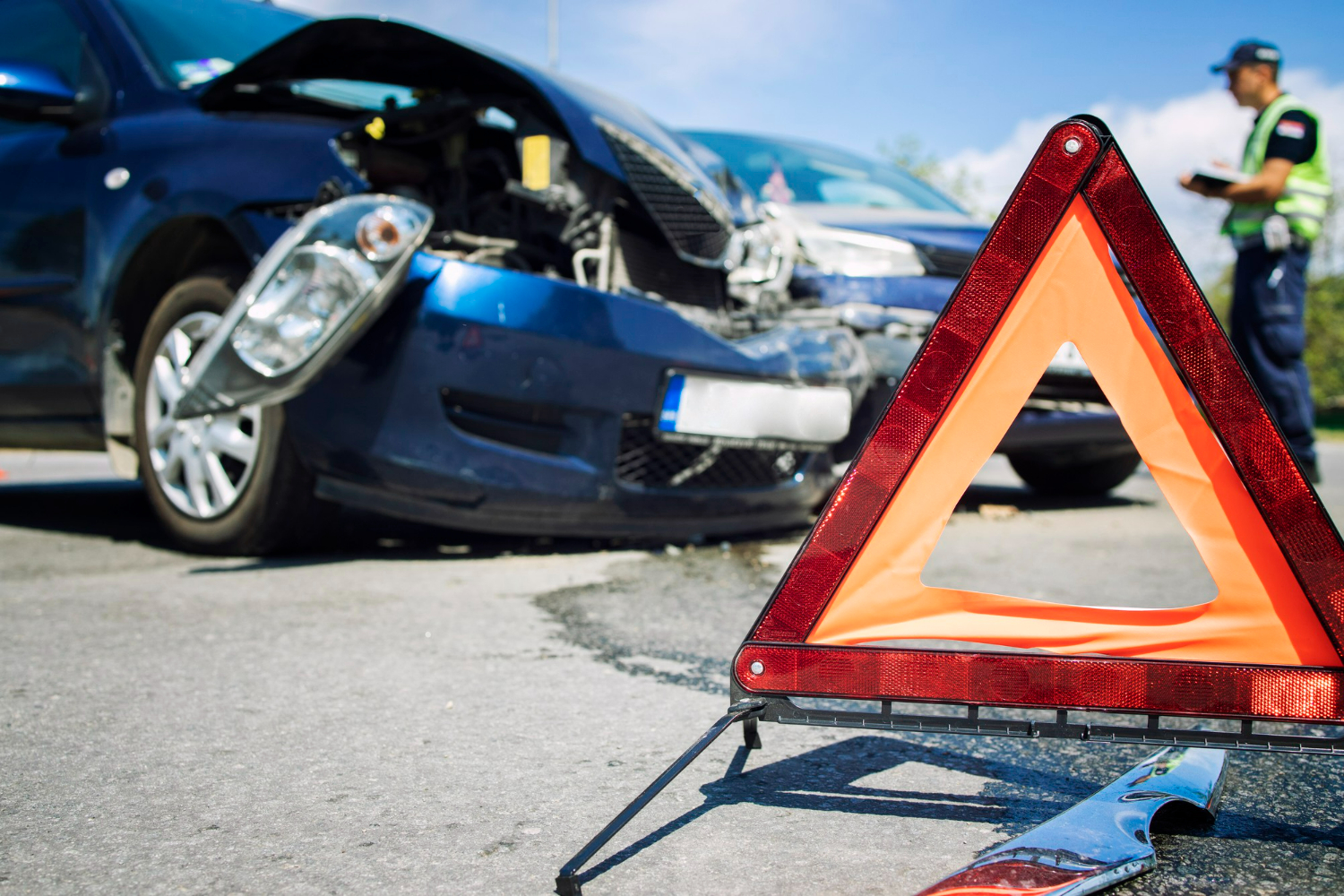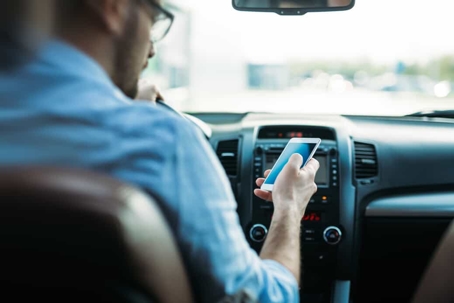

Distracted driving is an increasingly significant factor in all types of motor vehicle accidents, including those involving 18-wheelers. A loaded semi-truck can weigh as much as 40 tons –about 15 times the weight of an average passenger vehicle, which is why they are so dangerous in a collision. The hazard is even more significant when the truck driver is not paying adequate attention to the task of driving.
If you have been hurt in a truck accident caused by a distracted driver in Houston or elsewhere in Harris County, you could be owed compensation for your medical bills, lost wages, pain, suffering, and more. The law firm of Goldenzweig Law Group, PLLC, is here to help you understand your legal options and pursue the money you need for the harm you’ve suffered.
Contact us today for a free case review and consultation with a distracted driving truck accident lawyer in Houston.
What Is Distracted Driving?
The National Traffic Highway Safety Administration (NHTSA) defines distracted driving as “any activity that diverts attention from driving.” Drivers have a responsibility to avoid distractions and focus their complete attention on traffic.
Unfortunately, many drivers engage in secondary activities while driving, such as using electronics, conversing with passengers, eating and drinking, or reaching for items in the vehicle. NHTSA reported 3,142 fatalities in a recent year in the United States because of accidents caused by distracted driving. Losing focus from the road for even a few seconds can have devastating consequences.
Data from the Texas Department of Transportation (TxDOT) show how dangerous large trucks can be. TxDOT reported 5,743 collisions involving commercial motor vehicles in a recent year in Harris County, 775 of which caused minor or serious injuries and 43 of which were fatal. During that same period, distracted driving caused 12,010 crashes in the greater Houston area.
Types Of Driver Distractions
While the list of possible distractions for drivers is endless, three main categories of distractions impact drivers: visual distractions, manual distractions, and cognitive distractions.
Below are some of the most common activities that divert a driver’s attention from the roadway. Some fall into more than one category of distraction.
- Texting or using a smartphone
- Drinking or eating
- Grooming or applying makeup
- Reading maps or using a navigation system
- Watching videos
- Engaging with passengers in the vehicle
- Adjusting audio or temperature controls
- Reaching for items in the vehicle
- Smoking
- Daydreaming
- Reading billboards or turning to look at an accident
Of all the possible distractions a truck driver can engage in, texting on a smartphone is perhaps the most dangerous. The Federal Motor Carrier Safety Administration (FMCSA) estimates that drivers of commercial motor vehicles are 23.2 times more likely to crash or lose control of their vehicle while texting.
Distracted Driving Laws For Truckers In Texas
Texas state law bans operators of commercial motor vehicles from reading, writing, or sending electronic messages while driving. In addition to the statewide ban on texting, federal law prohibits operators of commercial motor vehicles from texting and from using handheld mobile telephones while driving. The FMCSA defines texting broadly, including activities such as reading text, accessing web pages, and dialing phone numbers.
Truck drivers who text while driving can face fines of up to $2,750. Drivers with multiple texting offenses risk disqualification, which means they could lose the ability to work as commercially licensed drivers for up to 120 days. Additionally, trucking companies can also face fines for lenient enforcement of texting bans or for requiring drivers to use handheld devices.
How To Prove Distractions In A Houston Truck Accident Lawsuit
If you choose Goldenzweig Law Group, PPLC to represent you, there are many paths we could pursue to prove a distracted truck driver caused your accident. Sometimes, the driver will admit distraction to the police or other parties involved in the accident. If that does not happen, here are some types of evidence we might use to establish your case:
- Police crash reports (PCRs) – Police crash reports in all states except Connecticut and New Hampshire include distraction as a potential cause for car accidents. We can use PCRs in our conversations with the trucking and insurance companies.
- Police citations — A citation for texting while driving is compelling evidence in a truck accident lawsuit.
- Evidence at the scene — Sometimes, drivers leave evidence of distraction in the truck’s cab, such as a running video or a spilled food container. A lack of skid marks could suggest they were too distracted to apply the brakes or swerve.
- Witness testimony — Witnesses at the scene may step forward to attest to having seen the driver engage in distracting activities.
- Phone records — Timestamps on the driver’s cell phone records could provide proof of cell phone use and texting activity during a crash.
- Video footage — Some trucking companies use in-cab cameras to monitor their drivers. Additionally, local businesses may have videos from security cameras documenting the truck driver’s distracted driving.
Damages Available In A Distracted Driving Truck Accident Case
If you have suffered harm in an accident caused by a trucker’s distracted driving, our attorneys can work with you to pursue damages for your injuries. Texting or using any handheld electronic device while operating a commercial motor vehicle is illegal. Our team can build a solid personal injury case against the driver on your behalf. We can seek compensation for a wide range of losses, including:
- Past and future medical bills
- Lost income due to missed time at work
- Emotional trauma
- Physical pain
- Property damage
Additionally, we might consider filing a lawsuit against the company that employs the driver if we suspect negligence on their part. The trucking company could be found liable for the accident if they require drivers to use handheld devices, if they allow distracted driving, or if they fail to enforce their own policies against distracted driving. Moreover, they could be vicariously liable if the driver was a direct employee instead of an independent contractor.
Our Houston Truck Accident Lawyers Help Distracted Driving Crash Victims
The physical and emotional injuries caused by distracted driving truck accidents can be severe and overwhelming. The attorneys at Goldenzweig Law Group, PPLC have decades of combined legal experience representing truck accident victims and fighting for fair compensation.
Contact us today for a free consultation with a distracted driving truck accident lawyer in Houston.
Navigation
Related Posts



